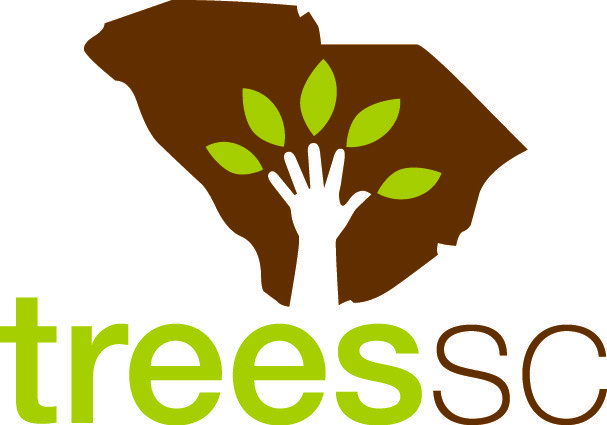“Few will have the greatness to bend history itself but each of us can work to change a small portion of events and the total of all those events will be written as the history of a generation.”
Robert F. Kennedy
The South Carolina Forestry Commission hosted a workshop late last year to solicit input concerning strategies for their Urban and Community Forestry program. These strategies will be used to inform the urban and community forestry goals for the Commission’s very important “Forest Action Plan”. Facilitated by the Green Infrastructure Center of Charlottesville, Virginia, the workshop was attended by stakeholders from across SC. Attendees were asked to identify key issues affecting South Carolina’s trees and develop strategies to resolve them. Additionally, several other stakeholders shared their thoughts via an online survey.
I was honored to be among a group of professionals asked to comment on the status of our state’s community forests and how best to improve them. Thirty years ago, the Forestry Commission assembled a similar group in Columbia to discuss the exact same topic and some of us were at both meetings.
Listed below are just a few of the issues we recently identified.
-People think of trees as adornments and are ignorant of their environmental values.
-SCDOT and utility companies do not want trees and manage them poorly.
-Elected officials are not educated about trees and ordinances reflect that ignorance.
-Ordinances are not enforced.
-Governments see trees as potential litigation and, consequently, steer clear of them.
-Agencies are not trained in proper tree planting and management techniques.
These issues were identified at this fall’s meeting. Remarkably, the same exact issues were identified 30 years ago with equal passion and sense of urgency. Is that even possible? We’ve spent millions of dollars and thousands of people have worked countless hours on behalf of a community forestry ideal. How can the issues be the same? Have we wasted our money, our time, and our idealism? Is it possible that we’ve accomplished nothing in 3 decades?
The truth is that we accomplished quite a bit. We just need to go further, dig deeper, and accomplish more.
In 1990, many citizens credited community trees as being beautiful and offering shade but not much more than that. In subsequent years, we fine-tuned our knowledge and learned how that acknowledged beauty improved property values and created more livable and prosperous towns and cities. As scientists became aware of the “urban heat island effect” and a warming world, in general, they spoke to us about how trees might mitigate the increasing temperatures. Years strode on, as did science, and more and more benefits of society’s trees were discovered. They trap pollutants, reduce energy consumption, help us heal (physically and emotionally), and so much more. Today, we are learning how community trees can mitigate storm water runoff and prevent flooding. Our understanding increases as the years increase.
Highway departments and utilities still prefer not to deal with trees, but now they acknowledge that tax and rate payers love trees and want them managed competently and sensitively as other infrastructure is built and maintained. Compromises are sometimes inadequate, but they do exist, and dialogue exists; albeit in doses that are still too small. Previously, we only complained about the edicts of bureaucracies and monopolies and did not make our voices heard. No more! We speak truth to their power and garner the support of others.
Prior to 1990, few local governments had tree protection ordinances. Natural disasters and a clamoring public forced change. Ordinances were passed but some early ones were knee jerk reactions, inadequately thought out and devoid of scientific forethought. Sometimes we pandered to developers and property rights activists. Enforcement was lax. However, with the passage of time, more ordinances have been written and others keep improving. Government officials are becoming more woke every day. As more eyes open, current ordinances are reviewed, revamped to better reflect citizens’ feelings and, of equal importance, are enforced.
Sidewalk/root conflicts, falling limbs, trees close to the right of way and more used to cause such legal concerns that lawyers and politicians felt that the best tree was on someone else’s property. Fortunately for us all, governments discovered ways to educate staff and leaders about proper management of trees and proper placement of them in public and private landscapes. As living, growing entities, we recognize that community trees present challenges and liabilities. The good news is that more and more people view those trees as assets that can be managed and are availing themselves of the great information on best management practices. In 2020, it is much easier and affordable, than in the past, for communities to learn about the most up to date up to date tree management methods
The issues identified 30 years ago were real and of significant concern to South Carolina’s tree advocates. Today’s similarly characterized issues are of equal concern and significance to this generation of advocates. We’ve been working on the problems and making progress. As we progress, we realize there is more to be accomplished.
Society’s issues are seldom simple. They are complex, multi-layered and often, controversial. As we achieve successes, we are aware that there may be other conflicts undiscovered and convolutions not yet understood. Like the proverbial peeling of an onion, every success removes a layer and allows a refreshed view of nuances critical to success. We build upon the past and adjust our strategies for the future. If our victories are incremental and cumulative, our search must be ongoing and remain strong because our convictions remain strong.

Recent Comments